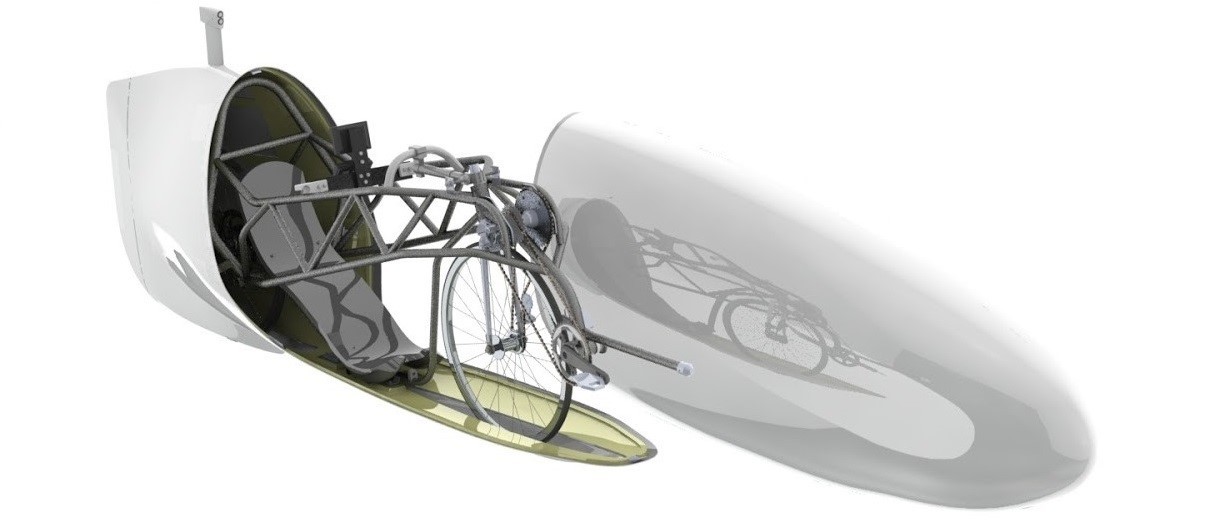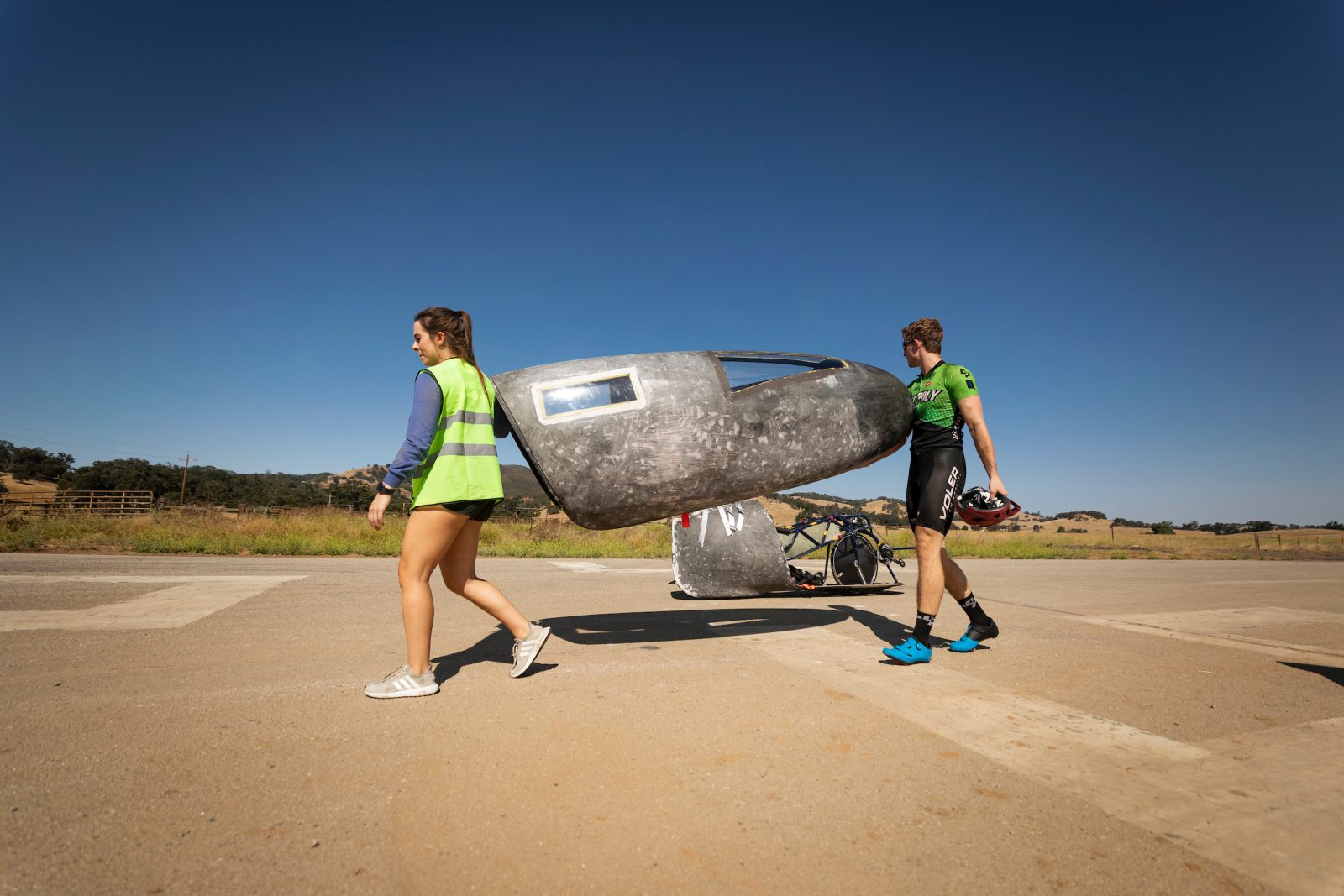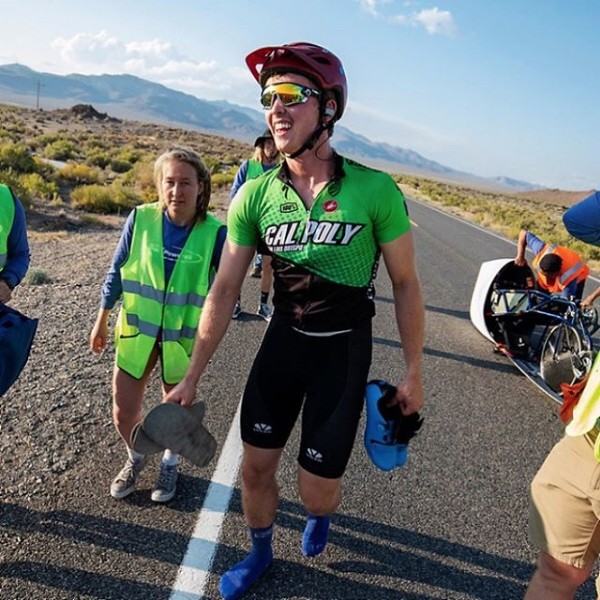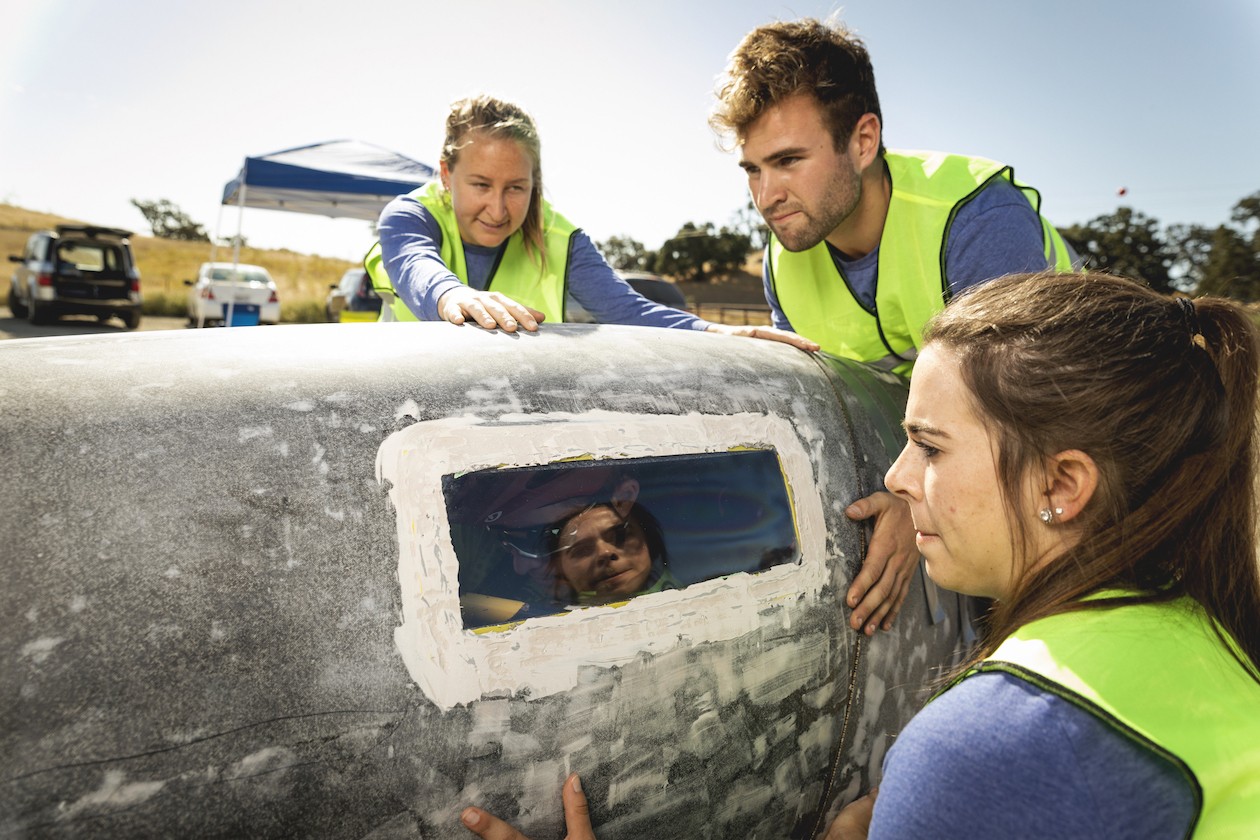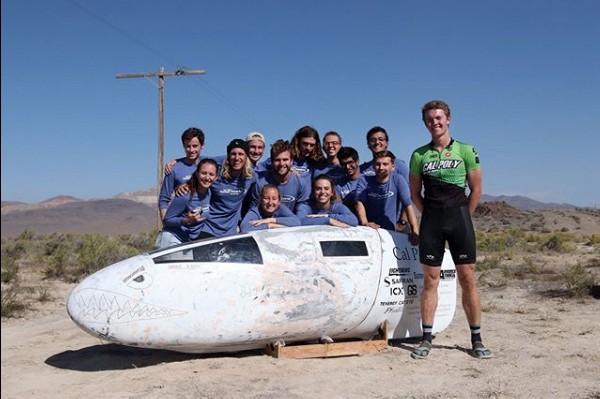Last year we brought you the story of how engineering students at Cal Poly used Precision Board urethane tooling to make fairings for their human-powered vehicle. We also told you that the team withdrew from the ASME competition and decided instead to compete at Battle Mountain, Nevada in September 2019 in order to beat the U.S. collegiate team speed record of 61.3 miles per hour. Hit the link below to see how they did and read the harrowing story of the competition, including video of a crash that ended up being a real test of the team’s built in safety measures.
From George Leone:
The Cal Poly San Luis Obispo HPV Team completed their fully enclosed Human Powered Vehicle “Ambition” just five days before competition. In the process they had to abandon a glitchy video vision system in favor of installing last-minute windows!
The event was the World Human Powered Vehicle Speed Competition (WHPSC) near Battle Mountain, Nevada in September 2019. On the second day of racing Josh Gieschen, the student pilot/motor, attained 64 miles per hour, exceeding UC Berkeley’s 26 year-old US collegiate record of 61.29 mph. But the wind was over the 3.7 meters per second limit, too strong to be “legal”, so no record was allowed.
This became a pattern for the rest of the week, with their speeds going as high as 66 mph twice, frustrating the team again and again with “illegal” winds. Leading up to the last day, Cal Poly only had one “legal” wind run, which was 1/10th mile an hour slower than the record.
It came down to the last day, Saturday. They were ceded in the second heat of the morning. Josh got into the bike, the team taped the seams of the shell closed, launched and followed in the school van. He did 63.11 mph, but was frustrated because the wind was “illegal” once again. That looked like the end of it for the year.
The Team drove back to start and requested to run again in the fourth and last heat. It’s rare to attempt two runs so close together because the “motor” usually can’t recover that quick, but Josh was adamant.
Veteran racer Peter Borenstadt graciously gave up his position in that heat so that Cal Poly could have another chance. That’s how HPV Racers are.
Cal Poly became serious, quietly taping the pilot in and launching. Josh gave it everything he had left. Just before the bike reached the crew in the “catch zone” (riders are fully enclosed and can’t put their feet down) an exhausted Josh grabbed the brakes too hard. The rear tire blew.
Ambition suddenly pitched sideways and pencil-rolled four times, amazingly ending upright beside the road to be caught by the crew. Because all the safety and restraint systems worked perfectly Josh exited with only a few bruises, and only a few scratches on the body of the bike.
Then they waited for the timer’s report on the radio. “Ambition: 63.68 miles per hour; wind is legal. Congratulations Cal Poly – you have a record!” The team went crazy!
Read more about their record breaking run HERE and also catch up on our original blog where the team used Precision Board urethane tooling to fabricate their HPV.
At Coastal Enterprises, we like to look at the composites industry as a fully collaborative effort. Every fresh new development by an individual is really a contribution to a collective knowledge base. Like any scientific pursuit, the most potent advancements are made when information is shared freely between likeminded groups of people. For this reason, we feel obliged to do everything we can to enlighten and empower the future community of composites professionals. That’s why we support school programs with donations of Precision Board HDU. Click HERE to find out more about the program or give us a call with your questions at 800-845-0745.
